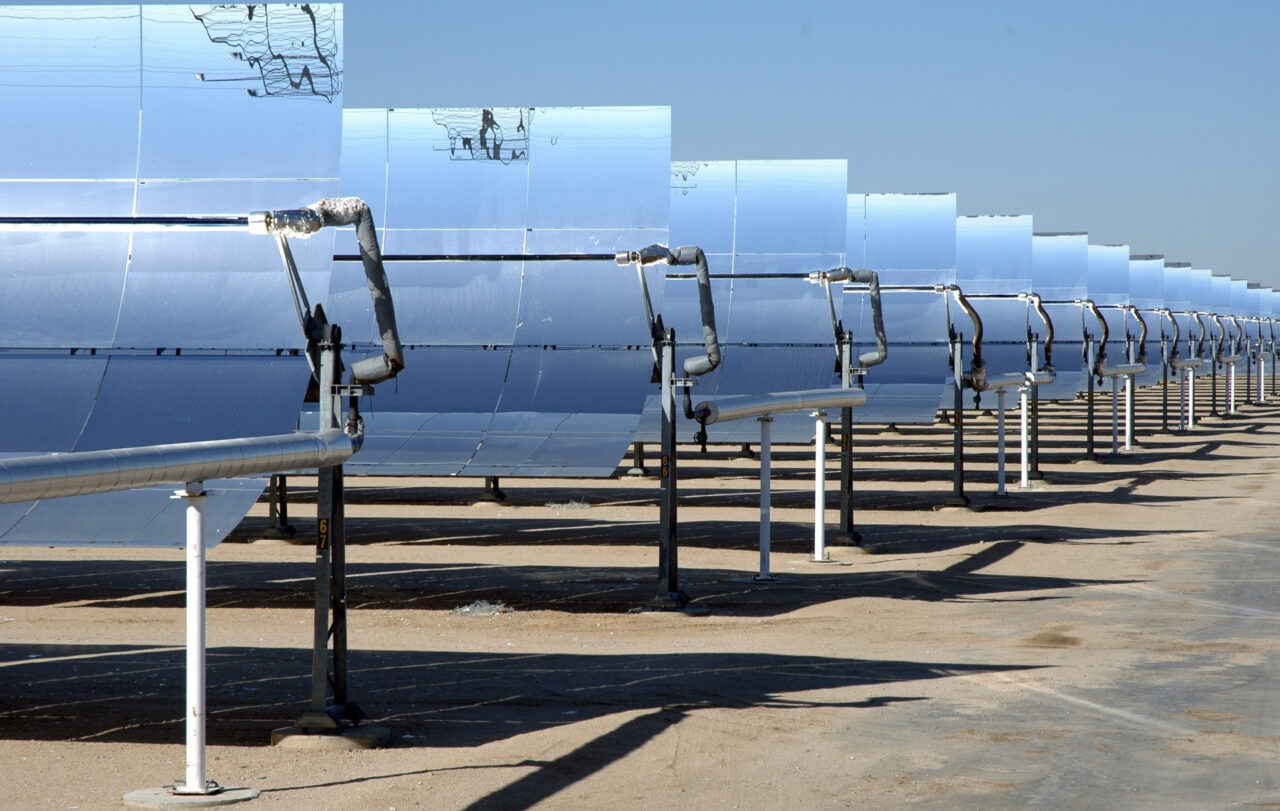Lighting the Way: Solar Decommissioning Policies Gaining Traction
State-by-State Analysis
This section outlines requirements for decommissioning in the states where LaBella does business.New York
As a requirement of being granted a building permit, large solar facilities of 25 MWs or more and “opt-in” facilities between 20-25 MWs in New York are required to include Final Decommissioning and Site Restoration Plan as well as a statement in their compliance filings to the Office of Renewable Energy Siting (ORES). The statement shall address safety and the removal of hazardous conditions, environmental impacts, aesthetics, salvage and recycling, potential future uses for the site, and the useful life of the facility.
The plan must include funding for decommissioning and site restoration. For facilities located on lands that are not owned by the applicant, a decommissioning and guaranty/security agreement between the applicant and the landowner must be included in the compliance filings. ORES also requires letters of credit or other financial assurance that provide proof that decommissioning can be properly funded. The letters are required within one year of facility operation and updated every fifth year. Additionally, a bill is currently in the New York legislature that aims to make modifications to the decommissioning rules for major renewable energy facilities located on prime agricultural lands.
Connecticut
While Connecticut has established stringent rules for decommissioning wind facilities, the state does not apply the same rules to solar facilities. The state attempted to implement a Connecticut Siting Council (CSC) rule, which would require solar facility permit applicants to post a decommission bond for site restoration via SB 350 in 2018, but the bill failed to pass. As of now, the state does not have any explicit statutes for the decommissioning of solar facilities.
Pennsylvania
In Pennsylvania, SB 211 was introduced in January 2023, passed through the Senate in March, and was referred to the House Environmental Resources and Energy Committee on April 25th, where it remains currently. SB 211 outlines the following requirements:
- Solar facility agreements executed after the effective date of the bill hold grantees responsible for decommissioning no later than 18 months after the facility has ceased production.
- The grantee must provide a decommissioning plan with financial assurance.
- The grantee must update the decommissioning plan on or before the fifth anniversary of the commencement of facility construction and every five years thereafter.
The legislation, if passed, would create a standard policy for all larger scale solar projects being built in Pennsylvania, regardless of whether localities presently require a decommissioning plan or not.
Ohio
Passed by the Ohio General Assembly in June 2021 and effective as of October 11, 2021, SB 52 enacted new rules pertaining to solar and wind farm decommissioning. Ohio’s new statute requires the following for decommissioning:
- At least 60 days prior to the commencement of construction, the applicant shall submit a comprehensive decommissioning plan or review and approval by the Ohio Power Siting board (OPSB).
- The decommissioning plan submitted to the OPSB shall be prepared by a registered engineer and shall include:
- A list of all parties involved in the decommissioning of the facility.
- A schedule of decommissioning activities, which shall not extend beyond 12 months from the date the plant ceases operation.
- An estimate of the full costs of decommissioning, including the disposal of all equipment and the restoration of the land. The statute expressly prohibits costs estimations using the salvage values of the facility equipment.
- Decommissioning cost estimates must be updated every five years by a registered engineer retained by the applicant.
- The applicant must post a performance bond to ensure funding is available to cover the decommissioning process. The OPSB shall be the oblige of the bond and the bond shall be updated every five years.
Maryland
Maryland’s statute simply requires a local jurisdiction to require a decommissioning plan as part of obtaining a Certificate of Public Convenience and Necessity from the Maryland Public Service Commission (PSC) for major and minor generating projects on an intensely developed area, a limited development area, or a resource conservation area. In addition, jurisdictions that do not currently require a decommissioning plan for major and minor generating are permitted to pass an ordinance to adopt regulations per the statute. Maryland’s statute is rather vague and does not explicitly list the requirements of the decommissioning plan, just that one will be needed to obtain permission from the Maryland PSC to build the facility.
Virginia
Virginia statute § 45.2-1708 stipulates that all local ordinances must include provisions to establish reasonable decommissioning rules for solar plants. Virginia defines decommissioning as the following:
- Reasonable restoration of the real property upon which the solar equipment was located
- Soil stabilization and revegetation of the ground cover disturbed by the former solar generation plant
Virginia statute § 15.2-2241.2 establishes that localities must require project owners, lessees, or developers to enter into a written agreement for decommissioning solar equipment prior to receiving conditional approval of a site plan. The following decommissioning stipulations apply:
- If the party that enters into such a written agreement defaults on the timeline for decommissioning, the locality has the right to enter the real property without consent of the owner and engage in decommissioning.
- The landowner, lessee, or developer must provide financial assurance via certified funds, cash escrows, bonds, letters of credit, or parent guarantees based on a professional engineer’s estimate. The statute also defines the costs applicable to the estimate of decommissioning.
North Carolina
North Carolina completed a study in 2021 to guide decommissioning rules and passed HB 130 in the 2023 session, which codified new rules on decommissioning. The new legislation lays out the following rules:
- The North Carolina Department of Environmental Quality (NCDEQ) will be responsible for promulgating rules in accordance with the law. The bill does not restrict local governments or contracts between landowners and owners of the system from creating rules that are more stringent than the outlined rules.
- It is the responsibility of the utility-scale project owner to decommission a plant no later than 12 months after the plant ceases production.
- The plant owner must notify NCDEQ within 30 days of the project ceasing production and outline the steps to be taken for decommissioning.
- The minimum requirements a plant owner must take for decommissioning are as follows:
- Disconnecting the solar project from the grid
- Removal of all equipment, including the collection and shipment of equipment for reuse, recycling, or disposal via hazardous waste or landfills depending on if the solar equipment qualifies as a hazardous waste
- Restoration of the property as nearly as practical to its condition before the siting of the utility-scale project or an alternative condition as agreed upon by the landowner and project owner
- Owners will be required to register with NCDEQ, update the registration every five years, and submit a decommissioning plan prepared by a professional engineer licensed in North Carolina to the NCDEQ for approval. The decommissioning plan should include the following:
- Contact information and general project narrative
- A narrative description of the procedures and sequence for decommissioning
- Information on equipment to be salvaged, including estimated value of equipment
- Information on the restoration process for the property
- Proposed mechanism to satisfy financial assurance requirements
- Owners will be required to establish financial assurance that decommissioning costs can be covered in an amount and manner that is compliant and acceptable to the NCDEQ.
- NCDEQ is permitted to collect fees as a part of the decommission submission to help fund the Utility-Scale Solar Management Fund, which is used to implement the provisions of HB 130.
South Carolina
In 2021, South Carolina’s HB 4100 created a stakeholder group within the South Carolina Department of Environmental Services (SCDES) to work on formulating regulations for the decommissioning and end of life of solar facilities. On June 8, 2023, SCDES submitted a Notice of Proposal Regulation for the new regulations with comments due by July 24, 2023. Public hearings commenced as of September 7th and the Notice of Final Regulation was filed with the State Register on September 8th. The Final regulations will be submitted sometime in January 2024 on the first day of the legislative session.
Tennessee
Tennessee’s state statute § 66-9-207 provides explicit rules for decommissioning plans/agreements but also permits local jurisdictions to implement stricter rules. At a minimum, Tennessee’s statute requires:
- A decommissioning plan as part of the general solar facilities agreement between a landowner and the grantee for solar facilities greater than 10 megawatts.
- Solar facilities agreements must contain financial assurances. Acceptable forms of financial assurance include a surety bond, collateral bond, irrevocable letter of credit, parent guaranty, cash, cashier’s check, certificate of deposit, or bank joint custody receipt,
- Solar facilities agreements must contain financial assurances of:
- No less than 5% of the decommissioning cost on the date the solar power facility commences commercial operation
- No less than 50% of the decommissioning cost on the 10th anniversary of the date the solar power facility commenced operation
- No less than 100% of the decommissioning cost on the 15th anniversary of the date the solar power facility commenced operation
- Decommissioning costs involve the estimated cost for the removal of all equipment and the restoration of land, less the estimated salvage value of the equipment.
Oregon
While Oregon currently has very few rules on the decommissioning of solar plants, the state has been working to rectify this by enrolling HB 3179 during the 2023 session. The bill redefines “renewable energy facilities” for the purposes of requiring decommissioning plans during the permitting process to be defined as:
- 35 megawatts but less than 50 megawatts if the power is produced from geothermal or wind energy at a single plant or within a single energy generation area, using:
- More than 100 acres but not more than 240 acres located on high-value farmland
- More than 100 acres but not more than 2,560 acres located on land that is predominantly cultivated or that, if not cultivated, is predominantly composed of soils that are in capability classes I to IV, as specified by the National Cooperative Soil Survey
- More than 320 acres but not more than 3,840 acres located on any other land
Facilities must provide a decommissioning plan to accomplish site restoration and provide a bond/security as financial assurances provided the plant meets the following locational requirements:
- Using more than 160 acres but not more than 240 acres located on high-value farmland
- Using more than 1,280 acres but not more than 2,560 acres located on land that is predominantly cultivated or that, if not cultivated, is predominantly composed of soils that are in capability classes I to IV, as specified by the National Cooperative Soil Survey
- Using more than 1,920 acres but not more than 3,840 acres located on any other land
Why Is This Significant?
 Decommissioning requirements directly impact project development costs, including gaining the necessary financial assurances, and the time and labor involved in developing the decommissioning plan agreements between the developer, landowner, and/or the local jurisdiction. Moreover, some states require decommissioning plans to be updated frequently, adding to administrative and operations costs. Decommissioning requirements can also directly impact total project expenditures and the regulatory hurdles a project must jump through to be constructed. Therefore, it is critically important to be aware of the decommissioning requirements at the state and local level.
Decommissioning requirements directly impact project development costs, including gaining the necessary financial assurances, and the time and labor involved in developing the decommissioning plan agreements between the developer, landowner, and/or the local jurisdiction. Moreover, some states require decommissioning plans to be updated frequently, adding to administrative and operations costs. Decommissioning requirements can also directly impact total project expenditures and the regulatory hurdles a project must jump through to be constructed. Therefore, it is critically important to be aware of the decommissioning requirements at the state and local level.
With the growing decommissioning policy movement due to the influx of new renewable energy installations, concerns around the decommissioning planning aspects of a project are growing, particularly with communities leery of the potential impacts from renewable energy systems in their community. Future project planning should strive to go beyond the minimum requirements to provide additional assurance to landowners, their neighbors, and the community that renewable energy projects will be disposed of in a strategic, coordinated, and responsible manner. Doing so will gain the trust of the local community and its officials, ultimately aiding a more expedited, less contentious project development process.

